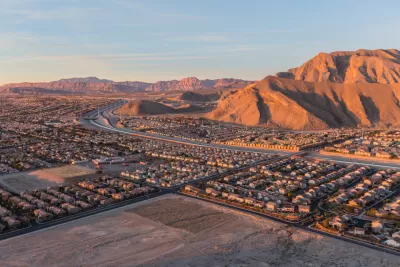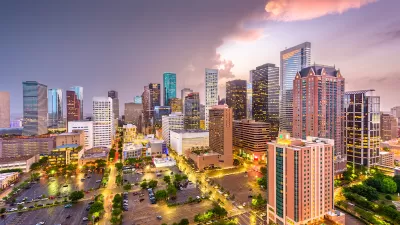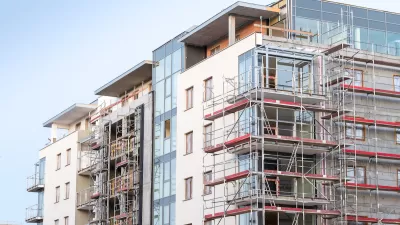Nevada’s explosive growth is creating a severe housing shortage, with the state needing almost 80,000 affordable housing units to meet demand.

“According to an annual report from the National Low Income Housing Coalition (NLIHC) published in April, the Las Vegas-Henderson-Paradise area had 13 affordable housing units available for every 100 extremely low-income household renters who needed them.” Nevada, with 18 affordable units for every 100 low-income renters, has the “most severe” affordable housing shortage in the country, reports Shannon Miller in Las Vegas Weekly. “That’s a shortage of 79,835 affordable and available rental homes for extremely low-income renters across the Silver State, according to the report.”
The article notes that “Nevada also tops the list for highest percentage of extremely low-income households (earning 0% to 30% of area median income, as defined by the U.S. Department of Housing and Urban Development) that are “severely cost burdened,” meaning the household pays more than 50% of its income on housing costs, including utilities,” with 20 percent of Nevada renter households classified as extremely low-income.
Meanwhile, construction of new market-rate housing is booming in the state. “Las Vegas Realtors in March listed the median price for a single-family home at nearly $460,000, a 27% increase from last year. And the Nevada State Apartment Association reported that monthly apartment rents in Southern Nevada rose about 20% from last year, from an average of $1,200 in April 2021 to $1,450 in April 2022.”
“In response to the affordable housing shortage, Clark County in April announced $160 million for a new Community Housing Fund to support affordable housing development,” as well as a plan to fund over 600 affordable units.
FULL STORY: Taking stock of Nevada’s affordable housing shortage—the ‘most severe’ in the nation

Alabama: Trump Terminates Settlements for Black Communities Harmed By Raw Sewage
Trump deemed the landmark civil rights agreement “illegal DEI and environmental justice policy.”

Planetizen Federal Action Tracker
A weekly monitor of how Trump’s orders and actions are impacting planners and planning in America.

The 120 Year Old Tiny Home Villages That Sheltered San Francisco’s Earthquake Refugees
More than a century ago, San Francisco mobilized to house thousands of residents displaced by the 1906 earthquake. Could their strategy offer a model for the present?

Ken Jennings Launches Transit Web Series
The Jeopardy champ wants you to ride public transit.

BLM To Rescind Public Lands Rule
The change will downgrade conservation, once again putting federal land at risk for mining and other extractive uses.

Indy Neighborhood Group Builds Temporary Multi-Use Path
Community members, aided in part by funding from the city, repurposed a vehicle lane to create a protected bike and pedestrian path for the summer season.
Urban Design for Planners 1: Software Tools
This six-course series explores essential urban design concepts using open source software and equips planners with the tools they need to participate fully in the urban design process.
Planning for Universal Design
Learn the tools for implementing Universal Design in planning regulations.
Clanton & Associates, Inc.
Jessamine County Fiscal Court
Institute for Housing and Urban Development Studies (IHS)
City of Grandview
Harvard GSD Executive Education
Toledo-Lucas County Plan Commissions
Salt Lake City
NYU Wagner Graduate School of Public Service





























